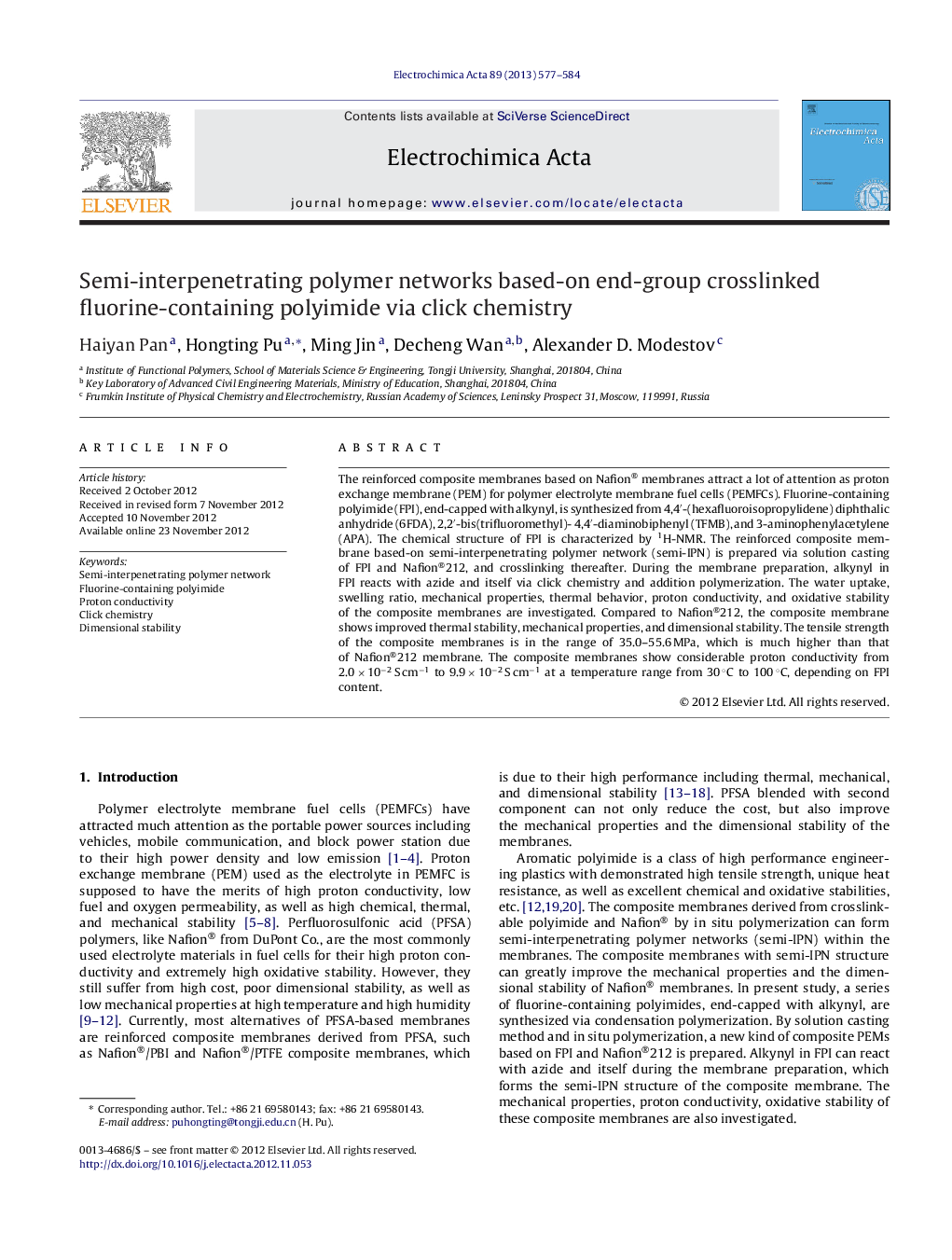| Article ID | Journal | Published Year | Pages | File Type |
|---|---|---|---|---|
| 187639 | Electrochimica Acta | 2013 | 8 Pages |
The reinforced composite membranes based on Nafion® membranes attract a lot of attention as proton exchange membrane (PEM) for polymer electrolyte membrane fuel cells (PEMFCs). Fluorine-containing polyimide (FPI), end-capped with alkynyl, is synthesized from 4,4′-(hexafluoroisopropylidene) diphthalic anhydride (6FDA), 2,2′-bis(trifluoromethyl)- 4,4′-diaminobiphenyl (TFMB), and 3-aminophenylacetylene (APA). The chemical structure of FPI is characterized by 1H-NMR. The reinforced composite membrane based-on semi-interpenetrating polymer network (semi-IPN) is prepared via solution casting of FPI and Nafion®212, and crosslinking thereafter. During the membrane preparation, alkynyl in FPI reacts with azide and itself via click chemistry and addition polymerization. The water uptake, swelling ratio, mechanical properties, thermal behavior, proton conductivity, and oxidative stability of the composite membranes are investigated. Compared to Nafion®212, the composite membrane shows improved thermal stability, mechanical properties, and dimensional stability. The tensile strength of the composite membranes is in the range of 35.0–55.6 MPa, which is much higher than that of Nafion®212 membrane. The composite membranes show considerable proton conductivity from 2.0 × 10−2 S cm−1 to 9.9 × 10−2 S cm−1 at a temperature range from 30 °C to 100 °C, depending on FPI content.
